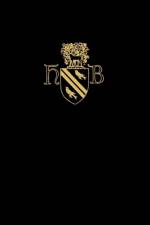1 061
Despite the title, the volume is in fact largely concerned with various forms of the Ordo Missae, or Ordinary of the Mass, including the vesting prayers and rubrical framework. Eleven items are edited: I. Ordinary from a MS Sarum Missal c. 1320 (the Morris or Tiptoft Missal), now Pierpont Morgan Library, New York, JamesPM n. 8. II. B. Langforde, 'Meditacyons for goostly exercyse. In the tyme of the masse', 15th-16th centuries. III. Alphabetum Sacerdotum, printed by Jean Petit for Guy Marchant, Paris, 10 September 1499 . IV. Ordinary from Coutances Missal of 1557, Missale cunctis sacerdotibus iuxta Constancien diocesis institutum, [. .] Robert Valentin, Rouen, 1557 ( V. A Dominican Ordinary from London, British Library, Additional MS 23935, ff. 480-484 (c. 1260-1275). VI. A Carthusian Ordinary (late 15th, early 16th century) from London, British Library, Cotton MS Nero A.III, ff. 130-160. VII. 'Preparatio Sacerdotis', from an octavo edition of the Roman Missal published by Nicolaus de Frankfordia at Venice in 1493 VIII. Johannes Burchardus, [Ordo Missae], from edition published in 1502 at Rome by Johann Besicken. IX. 'Indutus Planeta', from the octavo edition of the Roman Missal published by Frangois Fradin at Lyons in 1507. X. Ludovicus Ciconiolanus, Directorium Divinorum Officiorum, Antonio Blado, Rome, 1539 . XI. Ordinary from a MS Sarum Missal of 13th century, now Manchester, John Rylands University Library, MS Lat. 24, ff. 147-155v.






























